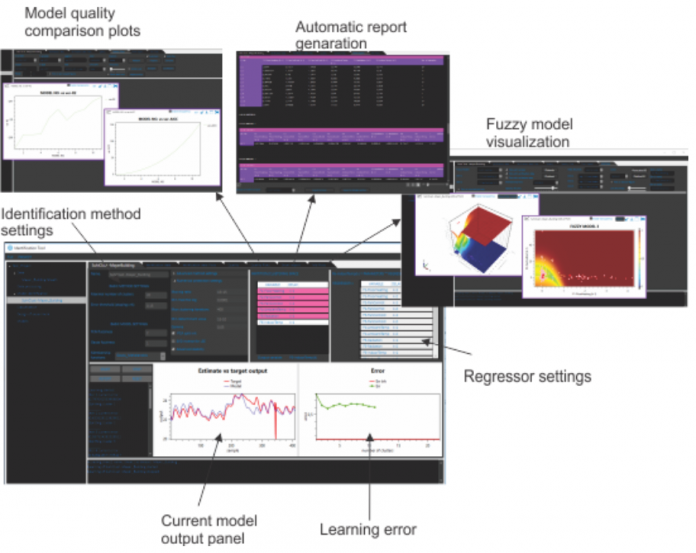Nonlinear System Identification with advanced local linear models
Many processing plants are these days very heavily instrumented with a large variety of sensors producing an enormous amount of data. Although the data holds a lot of information about the process state, the measured signals are usually used only for basic input-output control. To achieve the optimal functioning of the process in sense of yield, energy efficiency, profit and similar the process hardware equipment should be complemented with an advance software solutions. Main building block of such software solution is the model of the process. Based on the derived process model optimization of the process can be done as well as predictive control. The model also enables us to test different manufacturing scenarios and procedures without damaging the production line.
In this TTP, we are focusing on implementing the methodology for process model building from measured data. The methodology is based on fuzzy logic. This enables us to generate linear and nonlinear process models. The idea behind the approach is that the problem space is partitioned into smaller partitions. For those partitions linear models can be identified that describe the process behavior in that region. The local models are smoothly merged together describing the nonlinear process behavior throughout its operating range. Such models can be used for predictive control, process monitoring, forecasting and optimization.
Evon, is a fast growing automation company that puts a lot of focus on new technologies. Their automation solutions are based on XAMControl software environment, which is their own product. Now, for the first time, there is software available that covers all areas of industrial automation. The product employs all the possibilities that modern software tools and high-level languages offer. The system has been conceived as a redundant process control system for large, fail-safe systems. The high performance, the PLC programming in IEC-61131-3 and/or a high-level language and the automatic networking of the PLCs provide the foundation for fast and efficient engineering. The XAMControl is a cutting edge software for providing the automation solutions. Although it provides the capability of running the process models parallel to processes, it doesn’t provide the tools for building the models.
The purpose of this TTP was to extend the functionality of the XAMControl with the model identification capability. In the TTP the following work was done: the library with identification and model simulation routines was developed, the model identification workflow was designed, tools for model visualization were developed and the procedure for automatic generation of identification report was developed. The work was done in C# programming language which allows easy integration of developed algorithms in XAMControl software.
The identification library provides the routines for running the identified fuzzy model and routine for identification of fuzzy model using Supervised Hierarchical Clustering method. The original method found in the literature was improved to achieve better numerical stability and more reliability. The developed library also incorporates the Gustafson-Kessel clustering, Fuzzy c-means clustering and kmeans clustering algorithms. The library implements the criterions for choosing the right model such as AICC, BIC, R2, FPE and similar.
A lot of attention was given on the design of the identification workflow and method tuning procedure. The work flow was designed in such a way that it allows fast and simple identification tuning for a non-experts and detailed advance settings for experts.

Figure 1: Standalone C# application for testing the developed identification library
For testing purposes a standalone C# application was developed. The application allows importing different data files (CVS, Excel and Matlab). It incorporates the designed identification workflow and automatic identification report. The test application is shown on Figure 1.